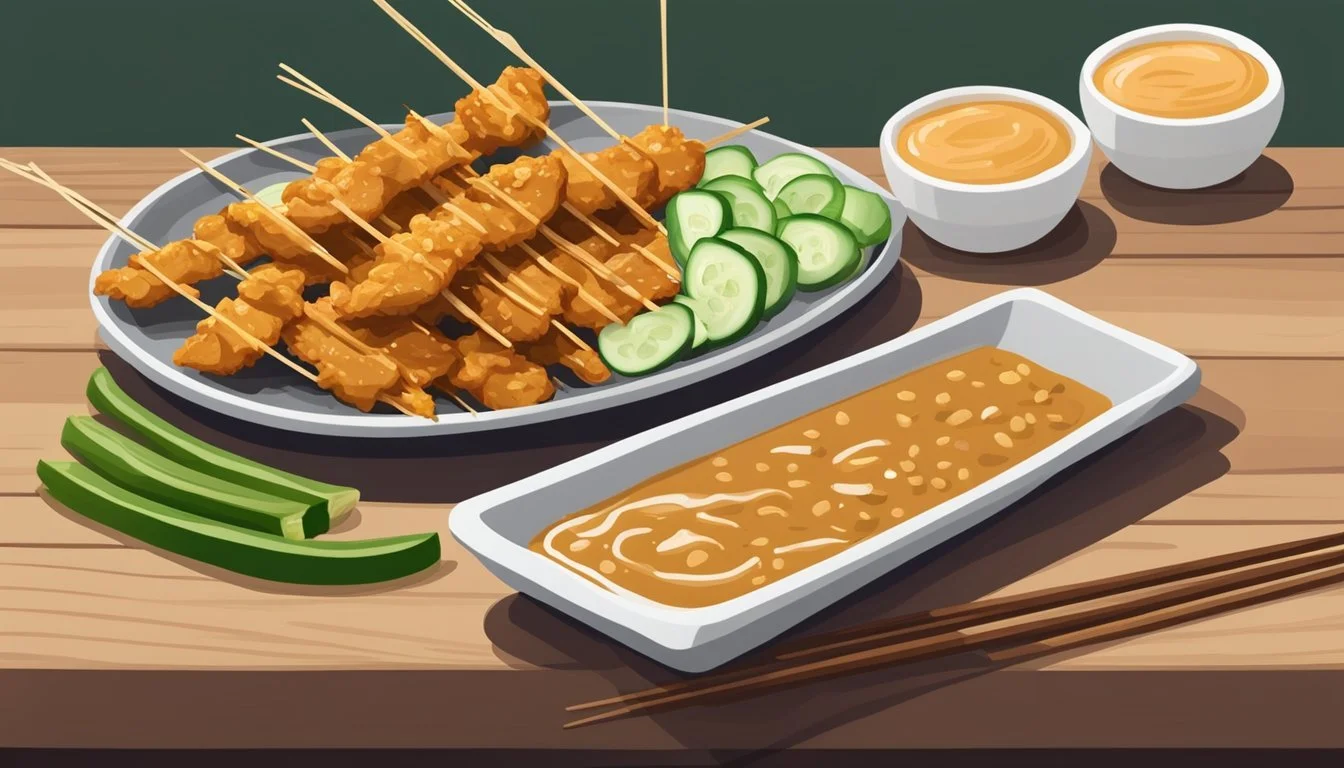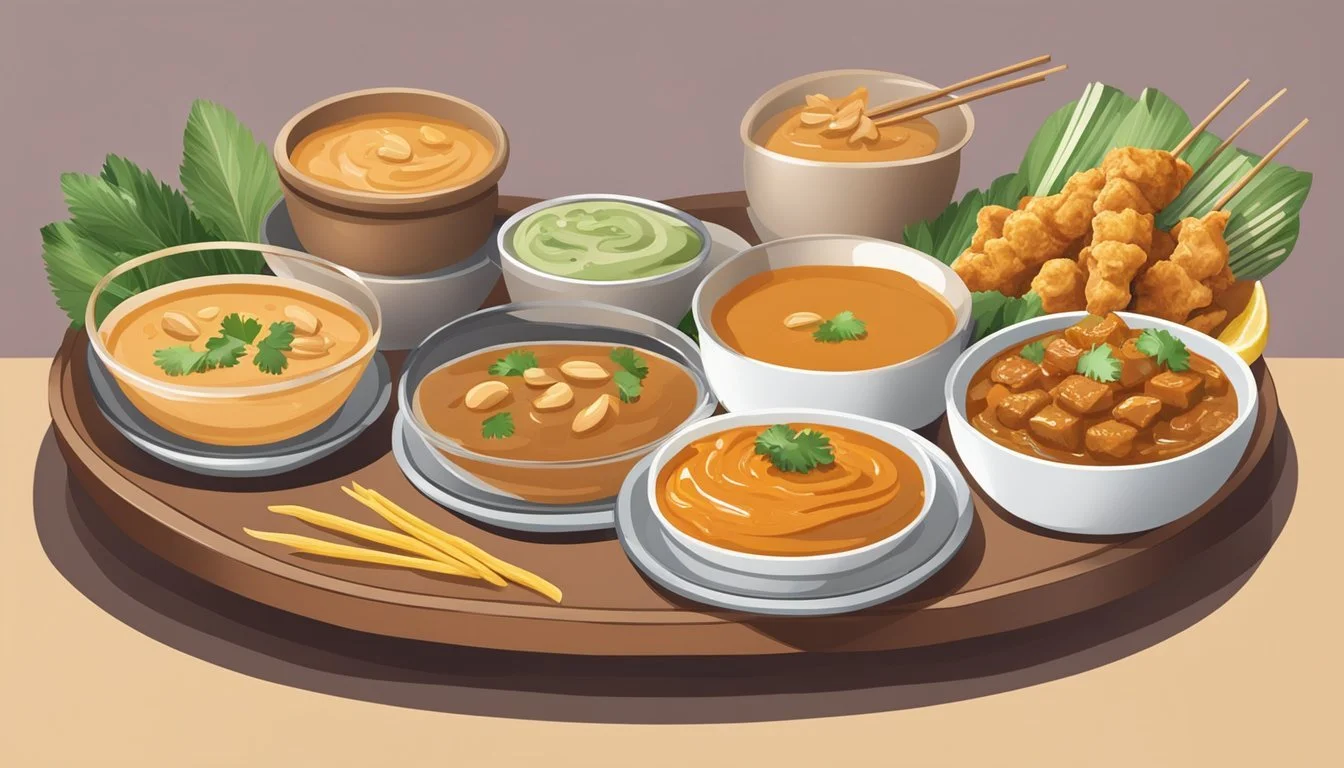How Long Does Chicken Satay Last?
Safe Storage and Shelf Life Explained
When it comes to enjoying chicken satay, knowing how long it lasts is essential for maintaining both taste and safety. Chicken satay can last in the refrigerator for up to 3 days when stored properly in an airtight container. Ensuring that the chicken is cooled to room temperature before refrigerating helps maintain the quality and flavor of the dish.
For longer storage, freezing is a practical option. Chicken satay can be frozen for up to 2 months, allowing you to enjoy it at your convenience. To do this, place the chicken in a single layer on a baking sheet to freeze quickly, and then transfer it to a freezer-safe bag or container.
Reheating chicken satay requires careful attention to prevent drying out the meat. Whether you choose the microwave, oven, or stovetop, gentle reheating will help retain the juiciness and delicious flavors of the satay. Always ensure that the chicken is heated to an internal temperature of 165°F (74°C) to keep it safe to eat.
Understanding Chicken Satay
Chicken satay is a popular dish from Southeast Asia, particularly Indonesia.
It consists of marinated chicken pieces threaded onto bamboo skewers. The meat is often marinated in a mixture of coconut milk, turmeric, and other spices.
Grilling the skewers gives the chicken a smoky aroma and slight charring, enhancing its flavor.
Key Elements of Chicken Satay:
Chicken: Typically skinless, boneless pieces are used.
Marinate: Common ingredients include coconut milk, turmeric, and a blend of spices.
Skewers: Traditionally, bamboo skewers are used.
Grill: Cooking on a grill provides the best results.
Chicken satay is often served with a peanut sauce or other dipping sauces. The total grilling time is about 6-8 minutes per side.
Understanding these fundamentals will help in preparing authentic chicken satay.
Ingredients and Variants
Chicken satay is a beloved dish appreciated for its rich marinated flavors and variety of preparation methods. This section covers the classic ingredients used in traditional recipes and explores regional variations and potential ingredient substitutes.
Classic Chicken Satay Ingredients
Traditional chicken satay marinade features a blend of soy sauce, coconut milk, brown sugar, fish sauce, and turmeric powder. These ingredients help to tenderize the chicken and imbue it with a complex, savory flavor.
Garlic and ginger add an aromatic depth, while lemongrass provides a hint of citrus. Shallots and cloves are often included for additional layers of taste.
For the peanut sauce, key ingredients usually include peanut butter, coconut milk, coriander, and brown sugar. This mix creates a sweet and nutty dip that complements the marinated chicken.
Optionally, red curry paste can be added for those seeking an extra kick. Sesame oil can enhance the flavor even further.
Regional Variations and Substitutes
Chicken satay varies greatly from region to region. In some areas, galangal replaces ginger for a spicier touch. Cumin and coriander seeds might be used in place of ground coriander for a nuttier profile.
In Thai versions, fish sauce is crucial, while Malaysian recipes might favor soy sauce. Palm sugar is a substitute for brown sugar in Southeast Asian renditions.
Vegetarian options swap chicken with tofu or tempeh, maintaining similar marination techniques. For a lighter version, low-fat coconut milk and less sugar can be used without sacrificing too much flavor.
Different cooking methods, such as grilling over charcoal or baking, also influence the final taste. Regardless of the approach, the emphasis remains on the balance of sweet, salty, and spicy flavors.
Preparation and Cooking Techniques
Proper preparation and cooking techniques are essential for achieving delicious chicken satay. Key steps include marinating the chicken, skewering it, and grilling it to perfection.
Marinade Preparation
For a flavorful chicken satay, marinating is crucial. Combine ingredients such as coconut milk, fish sauce, lime juice, garlic, ginger, and curry powder in a bowl. These ingredients infuse the chicken with rich flavor and tenderize the meat.
Chicken thighs are often preferred due to their tenderness, but chicken breasts work well too. For best results, marinate the chicken for at least 6 hours or overnight. This allows the flavors to penetrate deeply, ensuring each bite is savory and aromatic.
Skewering the Chicken
Once the chicken is well-marinated, it's time to skewer it. Both wooden and bamboo skewers are commonly used; however, wooden skewers should be soaked in water for 30 minutes beforehand to prevent burning.
Cut the marinated chicken into long, thin strips, about 1 inch wide. Thread 3-4 pieces onto each skewer, spacing them equally to ensure even cooking. Metal skewers can be used as an alternative, as they do not require soaking and can be easily reused.
Grilling to Perfection
Preheat the grill to medium-high heat, around 400 degrees Fahrenheit. Clean the grill grates with a brush to avoid sticking. Place the skewers on the hot grill, arranging them evenly.
Rotate the skewers frequently to cook the chicken evenly and develop a nice char. Chicken should be grilled for approximately 10-15 minutes, or until fully cooked, with an internal temperature of 165 degrees Fahrenheit.
Let the chicken satay rest for a few minutes before serving to allow the juices to redistribute. This step enhances the final taste and texture, making the satay tender and juicy.
Serving Suggestions
Chicken satay pairs wonderfully with a variety of side dishes and can be served in diverse ways to enhance its flavors. Proper presentation can elevate the dining experience, making the dish more appealing.
Accompaniments
Chicken satay is often enjoyed with peanut sauce, which adds a rich, nutty flavor. Pairing it with cucumber slices or a cucumber salad offers a refreshing contrast, balancing the savory meat.
Rice dishes like coconut ginger rice or jasmine rice serve as a hearty base. Noodles, particularly spicy peanut noodles, complement the dish well, adding a satisfying texture.
Other excellent sides include Asian slaw, lontong (compressed rice cakes), and grilled vegetable couscous. Lime wedges can also be included, allowing diners to squeeze fresh juice over the satay for a zesty finish.
Presentation
For a visually appealing platter, arrange chicken skewers neatly on a serving board or plate. Include small bowls of dipping sauces, such as the essential peanut sauce or a spicy chili dip.
Place the cucumber slices or salads on one side for easy access.
Garnish the platter with colorful elements like coriander leaves and lime wedges. For a more substantial meal, set portions of coconut rice or noodles onto the plate.
Whether serving as an appetizer or a main course, a clean and organized arrangement makes the dish inviting and easy to enjoy.
Preservation and Shelf Life
Chicken satay requires proper storage methods to maintain its flavor, texture, and safety. Understanding the best practices for refrigeration and freezing can help extend its shelf life.
Storing Chicken Satay
Cooked chicken satay should be stored in airtight containers to prevent contamination and preserve flavor and texture.
Refrigeration: Place the chicken satay in the refrigerator at 40°F (4°C) or below. Cooked dishes such as chicken satay can last 3-4 days in the fridge.
Freezing: For longer storage, freezing is ideal. Store portions of chicken satay in airtight freezer-safe containers or heavy-duty freezer bags. Label with date to keep track of storage times.
Chicken satay freezes well because the bite-sized pieces maintain their texture when thawed. Frozen chicken satay can last up to 2 months and still retain good quality.
Refrigeration and Freezing Tips
Refrigeration: Immediately refrigerate chicken satay after it has cooled down. Ensure the refrigerator operates at an optimal temperature of 40°F (4°C) or less.
For best results, store the chicken satay in shallow containers to cool rapidly and evenly.
Freezing: When freezing, ensure each piece is separated to avoid sticking together. Use wax paper to layer between pieces if needed.
When thawing, transfer the chicken satay to the refrigerator and let it thaw gradually to maintain flavor and texture. Avoid refreezing chicken satay after it has been thawed to prevent changes in quality and texture.
Proper refrigeration and freezing methods help maintain the quality and safety of chicken satay, ensuring it remains safe to eat and tastes delicious.
Health and Nutrition
Chicken satay is often praised for its health benefits, particularly when it comes to lean protein. Lean protein is essential for muscle growth and repair and helps keep you full longer. Chicken, being a primary ingredient, provides a good source of this nutrient.
Nutrient Amount per Serving Calories 200 Protein 25g Total Fat 8g Carbohydrates 5g
Many chicken satay recipes are naturally gluten-free. This is beneficial for individuals with gluten sensitivities or celiac disease. It's important, however, to check the ingredients used in marinades and sauces to ensure no hidden sources of gluten.
Fat content in chicken satay can vary based on the cuts of chicken used and the preparation method. Skinless chicken breasts are a leaner option compared to chicken thighs. The peanut sauce, while delicious, can add extra calories and fat due to the peanuts and oils.
Chicken satay generally contains around 200 calories per serving. It provides a balanced mix of protein, fats, and a small quantity of carbohydrates. The exact nutritional profile can change depending on the recipe variations, such as the type of marinade and the cooking method.
Incorporating chicken satay into a well-rounded diet can offer a tasty way to meet protein needs while enjoying a flavorful dish.
Alternate Cooking Methods
For those looking to try different techniques for cooking chicken satay, both oven baking and stovetop methods offer flavorful and efficient alternatives to traditional grilling.
Oven Baking
Oven baking is a straightforward way to cook chicken satay. Begin by preheating the oven to 425 degrees Fahrenheit, ensuring the high heat will quickly cook the chicken without drying it out. Line a baking sheet with foil for easy cleanup. If using wooden skewers, soak them in water for 10 to 30 minutes to prevent burning.
Arrange the marinated meat on the skewers, placing them on the prepared baking sheet. Bake for approximately 15 minutes, turning halfway through. This method yields juicy, evenly cooked skewered chicken with minimal effort.
Stovetop Methods
Stovetop cooking is another effective method. Use a grill pan or a cast-iron skillet for best results. Set the heat to medium-high. If you use wooden skewers, pre-soak them as with the oven method.
Once the pan is hot, place the marinated, skewered chicken onto the surface. Cook each side for 3-4 minutes until the meat is fully cooked and has a nice char. The stovetop offers control over the cooking process, allowing adjustments in real-time to avoid overcooking. This method can simulate the flavor and texture of grilled chicken without needing an outdoor grill.
Peanut Sauce and Dips
Peanut sauce and dips enhance the flavor of chicken satay, adding a rich, nutty element that complements the marinated meat. These sauces can vary greatly in taste and texture, depending on the ingredients used.
Homemade Peanut Sauce Creation
Creating homemade peanut sauce can be straightforward with the right ingredients. Typically, peanut butter, soy sauce, lime juice, and brown sugar form the base. For added depth, include garlic and ginger.
Adjust the thickness with water or coconut milk. Optional elements such as honey, chili powder, or a chopped jalapeno can personalize the heat level and sweetness. Some recipes recommend a small amount of fish sauce for extra umami.
Combining these ingredients results in a smooth, pourable sauce perfect for dipping or drizzling.
Food Safety and Handling
When preparing chicken satay, it is crucial to handle and store the chicken properly to prevent foodborne illnesses.
Cross-contamination can occur if raw chicken comes into contact with other food items. Always use separate cutting boards and utensils for raw chicken and wash hands thoroughly after handling it.
Safe cooking temperature ensures that harmful bacteria are destroyed. Cook chicken satay to an internal temperature of at least 165°F (74°C). Use a meat thermometer to check the temperature of the thickest part of the chicken pieces.
Storage guidelines for chicken satay are essential for maintaining its quality and safety:
Refrigeration: Store cooked chicken satay in an airtight container in the refrigerator. Consume within 3-4 days.
Freezing: For longer storage, freeze chicken satay in freezer-safe containers or bags. Properly stored, it can last up to 2-3 months in the freezer.
Always practice safe food handling techniques, including washing hands, utensils, and surfaces frequently. This minimizes the risk of contamination and ensures the chicken remains safe to eat.
Exploring Cultural Significance
Chicken satay, known as "sate" in Indonesia, is a beloved dish across Southeast Asia.
In Indonesia, it holds a special place at street food stalls and family gatherings. The dish is deeply rooted in Indonesian culture, symbolizing communal dining and celebration.
Malaysia also embraces satay as a culinary icon. It is commonly found at night markets and festivals. The Malaysian version often features a unique twist, incorporating local spices and techniques.
In Thailand, chicken satay is a popular street food. It is typically served with a tangy peanut sauce and fresh cucumber relish. This combination showcases the vibrant flavors of Thai cuisine.
Satay's presence in Southeast Asian street food culture cannot be overstated. Vendors skillfully prepare and grill the skewers, creating an inviting aroma that draws locals and tourists alike.
Here is a brief overview of satay's cultural significance across the region:
Country Local Name Cultural Context Indonesia Sate Symbol of communal dining and celebrations Malaysia Satay Night markets and festival staple Thailand Satay Popular street food served with peanut sauce
Satay's widespread popularity in Southeast Asia illustrates its significance. It transcends borders and cultures, becoming a symbol of unity and tradition.











